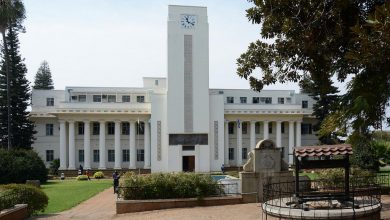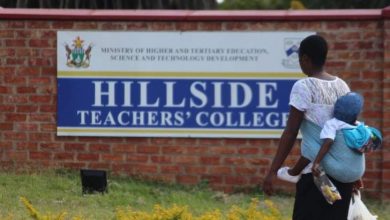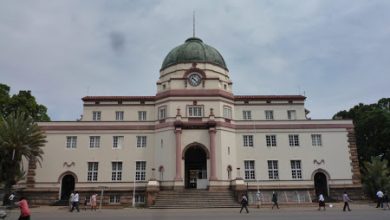Residents want clarity on ward retention fund

BULAWAYO City Council (BCC) claims to be running the ward retention fund transparently but residents have expressed reservations on the lack of accountability around how the funds are disbursed.
The fund was established in 2015, with each ward retaining 3 percent of its monthly rates revenue collection to fund developmental programmes in their localities.
According to statistics from BCC, the cumulative income (billed income) from Ward Retention from January 2021 to May 2021 is ZWL$24 054 050.21
However, residents say they need clarity as to how the funds are distributed as some wards have not received their allocation.
“There is no transparency regarding the funds, the administration of the fund is opaque as residents are required to look for quotations for instance but the funds remain with BCC to select and make purchases for the project,” said Bulawayo Progressive Residents Association (BPRA) Gender Officer, Abigail Siziba.
Siziba indicated there were inadequate consultations regarding the choice of development projects in wards, leading to some projects being imposed on residents.
“Residents also don’t see notable developments from the use of the funds. Councillors are also not forthcoming to account for the funds as they also complain about bottlenecks, as funds are not released smoothly. There is generally a concern that the funds might be available on paper and not in actual terms,” she said.
In 2019, BPRA petitioned BCC over the fund demanding an audit after some ward had not received their allocation between 2016 and 2017.
“Our interventions led to the release of these funds in Ward 9 and Ward 15 where swimming pools were refurbished. In Ward 13 residents managed to construct a block of toilets,” Siziba said.
Chairperson of council’s Finance and Development Committee, Councillor Tawanda Ruzive, noted this money was not given directly to residents but was processed by council straight to service providers.
“As far as I’m concerned it’s very clear and transparent but the only problem is there are bottlenecks,” he said, citing a local government clause that stated if councils wanted to spend more than US$10 000 on a project, they had to go tender through the Procurement Regulatory Authority of Zimbabwe (PRAZ).
“The tender process is cumbersome and by the time projects are approved, prices have changed. If you want to build a toilet or a school and it costs more than US$10 000, the project has to be taken through a tender process. But small projects like street lighting can easily happen and have always been happening.”
Delays involved in tender procedures was the council’s “biggest” problem, noted Ruzive, who said, “that’s why so many councillors have failed to deliver on ward retention.”
The finance chairperson indicated Harare also has the same facility, which took a “massive” 25 percent of what is paid by residents.
Ruzive acknowledged residents’ misgivings about the fund’s effectiveness, saying ‘indeed’ the bottlenecks were frustrating.
“In terms of whether it is really working, I’m one of the first ones to say no, for the simple reason that those bottlenecks don’t allow us to use that money as and when we want it or to freely use it. We are subjected to processes that take months by the time you go on the ground, due to our economic situation things would have changed, then you have to start again. It is actually frustrating from that perspective,” he said.
“But it’s a very good initiative, more like local authorities had done devolution way ahead of the national government because wards decide what they want to do.”
BCC Corporate Communications Manager, Nesisa Mpofu, said these records indicating the type of projects and expenditure were available to residents.
“We also give a monthly report to the Finance and Development Committee on the Income and Expenditure under Ward Retention,” she said.
“The City of Bulawayo is audited as part of ensuring accountable and transparent use of its resources. The Projects are also implemented following the procurement regulations. Updates on the projects are also published in the Finance and Development Committee and Council Agenda, which is available on the council Website for the public.”
Mpofu added local area councillors are requested to meet with residents and come up with proposed capital projects that can be funded under the scheme.
“These are submitted to the council where wards in liaison with various council departments prepare for their implementation. Assessments are done to check if the Ward Retention Fund for that particular ward is adequate to fund the proposed project. If inadequate, this is communicated to the ward to select another project. If adequate and it’s a capital project, the project is implemented,” she explained.
A Luveve resident, Khanyile Mlotshwa said residents needed to be made aware of the accountability mechanisms that are available around the fund.
“There are many aspects of our ward that need attention, for example Old Luveve is very dark as the street lights are malfunctioning. That is a project that should be prioritised by a fund like this. However, without any knowledge and without being privy to how it works, it is hard to say for sure that this is a project the ward retention funds can underwrite,” he said.
“Recently, we had the local authority change our water piping. We don’t know where the funds came from. They can tell us it is the Ward Retention funds and we will have to agree. I think what is important is to clarify a lot of things and dissipate ignorance around council funds.”
BPRA believes the fund should be restructured and a separate account created for the money to make sure residents are able to monitor its use.
“Residents must be given autonomy to select service providers and make purchases on their own,” Siziba said.






